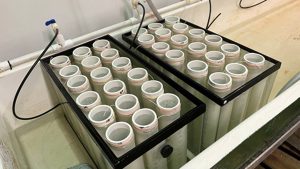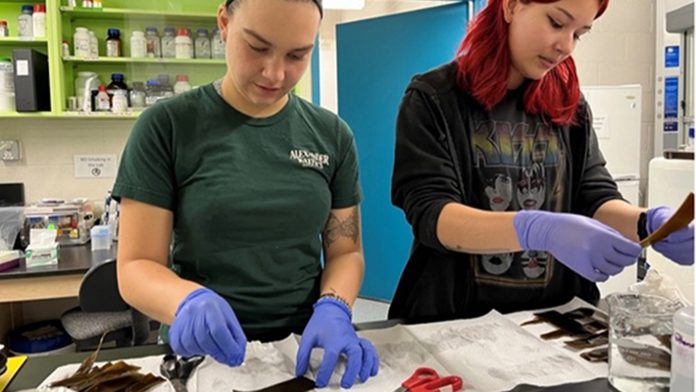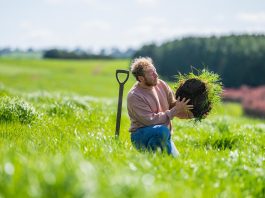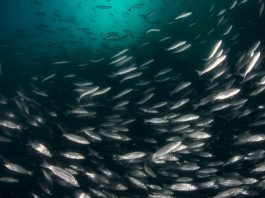Researchers at Dalhousie University are utilising the institution’s world-class research facilities to ensure sustainable aquaculture practices are used for years to come.
Most seafood production in Canada comes from wild or natural stocks. However, Canadian aquaculture production has grown by over 140,000 tonnes since the early 1990s.
Aquaculture involves the farming of aquatic species, including fish, shellfish, and marine plant species like kelp.
Aquaculture was initially used to supplement wild fish stocks but is now a large-scale industry, with the production value growing from $234m in 1991 to $1.3bn by 2021.
From the facility to the ocean
The Aquatron, based at Dalhousie, is Canada’s largest university aquatic research facility.
Dr Carolyn Buchwald, a chemical oceanographer who focuses on nutrient cycling, uses the facility and its staff to research kelp aquaculture.
Her research, funded by the Ocean Frontier Institute’s Seed Fund programme, aims to better understand the optimal conditions for kelp growth from seeds.
“We want to help Nova Scotia kelp aquaculture industry grow by better understanding one of the most cost-intensive parts of the operation: the hatchery,” she explained.
To farm kelp in the ocean, it first must be grown on seeded lines, which are ropes containing baby kelp.
Seeding the ropes takes place in a tank known as a hatchery over approximately six weeks.
Dr Buchwald and her team wanted to learn the most efficient way to conduct the process so they could advise kelp farmers on the best protocols for sustainable kelp seed production.
Dr Buchwald partnered with the Ecology Action Centre (EAC) and Peter Darnell, the owner of Indian Point Marine Farms, to plant seeds grown under different conditions in the lab at Dalhousie at their test farm in Mahone Bay, Nova Scotia.

The results will eventually enable the researchers to see which experiment treatment grew the best when returned to their natural environment.
A more time and cost-effective approach to sustainable aquaculture
Typically, farmers must spend a significant amount of time and money tending to kelp hatcheries; however, Dr Buchwald’s research is aimed at making this process more time and cost-effective.
Kelp farmers have three main controls to manipulate in their hatcheries: water sterilisation, nutrients and light.
The team are researching how to adjust these variables to help kelp grow fastest and largest while supporting sustainable aquaculture and helping farmers grow their crops more effectively.
Using water drawn in from the Atlantic off the coast of Halifax, the researchers are creating environments in the Aquatron’s lab facilities that approximate the conditions encountered by farmers in the ocean, modifying sterilisation levels and light accordingly.
They are also testing nutrients, finding that tanks with lower nutrient levels had longer and denser baby kelp growth—an encouraging discovery that Dr Buchwald says should be pursued.









